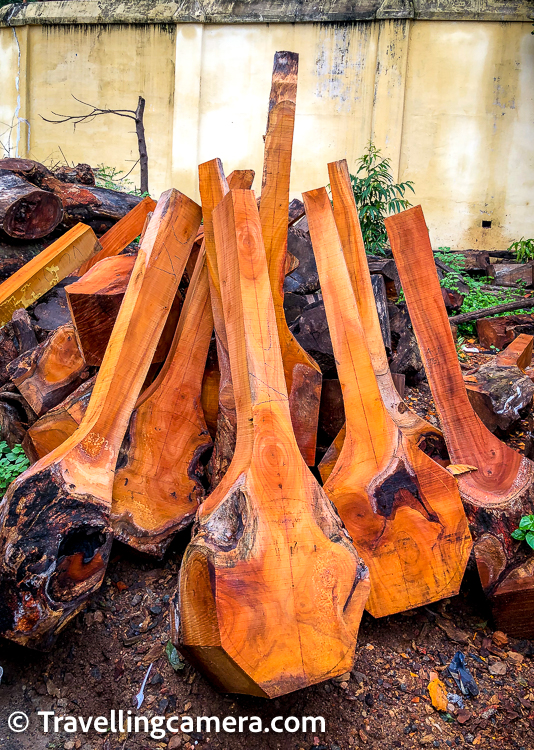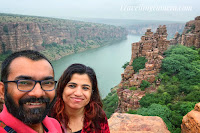The Exquisite Art of Traditional Veena Making in Thanjavur, Tamil Nadu || Keeping India's musical heritage alive for centuries
After visiting the Brihadeeshwara Temple in Thanjavur, Tamil Nadu, we decided to walk down toward Reverand Schwartz Memorial and Church. We wanted to explore this place as well. However, the gates of the memorial and the garden were locked. On our way back, we came across an interesting sight - that of several large pieces of wood carved into a veena-like shape. This led us to do some research around Veena making in Thanjavur.
It turns out that one of the most prominent art forms in Thanjavur, apart from the making of Thanjavur dolls, is the making of veenas, a traditional Indian stringed instrument that is popular in Carnatic music. It is a meticulous and intricate process that requires great skill and patience. The process begins with the selection of the wood, which is typically jackfruit wood, although occasionally other types of wood such as teak, sandalwood, or ebony may also be used.
Once the wood is selected, it is carefully cut into the required shapes and sizes for the different parts of the veena. The hollow body of the veena is carved out of a single block of wood and then seasoned to ensure that it is dry and stable. The frets, which are typically made of brass, are then fixed onto the fingerboard, and the tuning pegs are attached to the headstock. The strings, which are made of steel or bronze, are then fixed onto the veena and tuned to the desired pitch. Finally, the veena is polished and decorated with intricate designs and patterns, often using gold leaf or other decorative materials.
Veena making is a time-honored tradition that has been passed down from generation to generation. Today, there are still a number of skilled craftsmen in Thanjavur who continue to make veenas using the same traditional methods that have been used for centuries.
It is fascinating to know all this. Unfortunately the workshop too was closed on the day when we happened to be there. Otherwise, we would probably have been able to spot some craftsmen at work. Anyhow, we got more than what we were expecting anyway, and one must not be greedy. So thanking our good luck, we continued our walk.
..
Related Blogposts -
 Noida to Rameswaram road trip via the Eastern Ghats || A Challenging, Intense, and Enriching Journey through Six States of India
Noida to Rameswaram road trip via the Eastern Ghats || A Challenging, Intense, and Enriching Journey through Six States of India Delhi to Bhopal Road Trip - The very first day of our 14 days long trip through east coast of India || Noida to Rameshwaram
Delhi to Bhopal Road Trip - The very first day of our 14 days long trip through east coast of India || Noida to Rameshwaram




%20to%20see%20the%20Danish%20fort%20in%20Tamilnadu%20state%20of%20India-3.jpg)


.jpg)
Comments